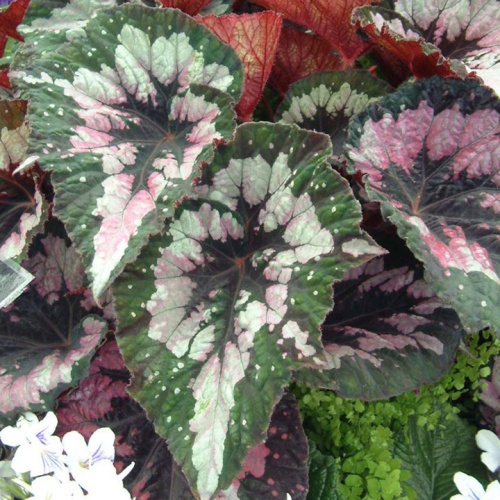
Begonias are a group of interesting plants with over 2,000 species and hybrids. They are valued primarily for their uniquely beautiful flowers and also their decorative leaves, varying in shapes and color. Begonias also range in size from the tiny, ground hugging creepers to the stout-stemmed large specimen plants. All begonias have green or colorful asymmetrical leaves, that grows alternately on its stem. Many begonias doesn’t require continuous direct sunlight, which makes them particularly suitable for indoor use.
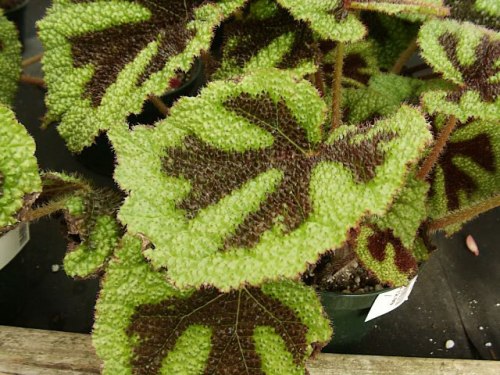
Most plants produce clusters of flowers on short stalks arising from the stem or on each leaf axil. There is a separate male and female flowers on the same plants, and with these, female flowers can be pollinated to produce a capsule with seeds.
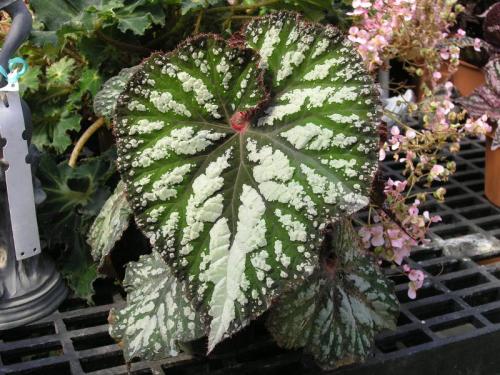
The plant group is so large that it is divided into different categories like fibrous rooted and rhizomatous begonias, flowering or foliage begonias, miniature or large begonias, and many others. There is actually a great biodiversity in plant appearance in this plant group, which makes it very interesting for collectors and breeders.
With these varied characteristics, begonias have varied uses also. The large begonias, can be used as specimen plants established on large decorative pots, or they can be used as landscaping plants in areas with diffused bright light, usually as companion plants or as ground covers. Medium sized plants are ideal as hanging plants, landscape plants in areas near cascading rocky terrain, in rock gardens, and in indoor gardens. Miniature begonias are ideal for dish gardens, as their leaves and flowers provide added color in these miniature arrangements.
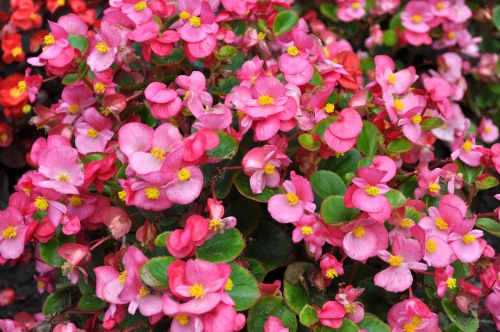
Begonias as actually very easy to take care of and they easily root on soil and can easily thrive in a shaded or semi lighted area and with moderate care. You just have to watch that they don’t get water logged as they can easily rot on long standing very wet soil.
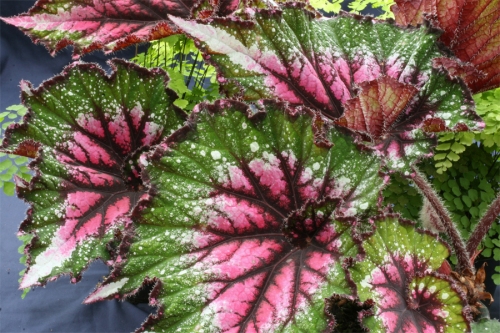
Light. Fibrous-rooted and rhizomatous begonias grown primarily for their foliage need diffused bright light, but never direct sunlight. Those grown primarily for their flowers need three to four hours a day of direct sunlight.
Temperature. Normal room temperature are suited for actively growing plants. Provide sufficient relative humidity or moisture as Begonias suffer in dry air. For increased humidity, stand pots on trays of moist pebbles and suspend saucers of water under hanging baskets.
Watering. Water plants regularly or moderately, usually every day or every other day, allowing the top inch of the potting mixture to dry out before watering again. Don’t let the leaves to wilt. Some begonia species and hybrids have a dormant or rest period, and some at times loose their leaves and produce leggy plants.
Fertilization. Apply a diluted high potash liquid fertilizer to actively growing plants every two weeks. This is to induce regular flowering.
Potting and Repotting. Use a loamy soil textured soil mixture, usually equal parts of garden soil and leaf compost. Place an inch layer of clay-pot fragments at the bottom of the pots for extra drainage. When potting or repotting, simply sprinkle some potting mixture around the tuber and roots, and tap the container briskly to settle the mixture.
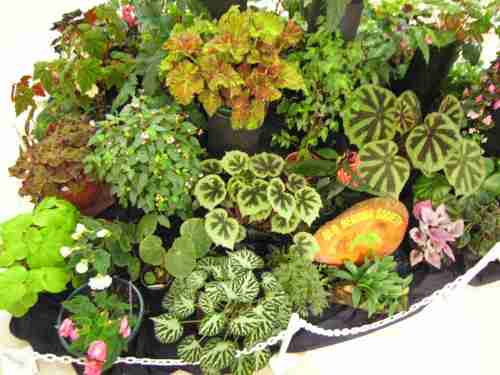
Propagation. The best way of propagating tuberous begonias like B. gracilis, B. grandis, and B. sutherlandii is from small tubers or bulbils that appear in leaf axils during the cold months. Detach these bulbils when top growth dies down. They can be temporarily be stored in a container in a cool dry place or you may plant the bulbils in a pot with equal mixture of garden soil and leaf compost. Just place the bulbils over the soil and cover it with a moistened mixture. Place the pots in bright filtered light water lightly, just to make the soil moist, but not soaking wet. Water generously every watering when bulbils produce shoots until mature. Another way of propagating Begonias is through stem cuttings, usually a 2-3 inch long tip cutting can be placed on moistened soil. Dipping the base of the cutting in a rooting hormone will help in producing roots. For added moisture, you may enclose the entire pot of rooted cuttings in a clear plastic bag and stand it in filtered bright light until cuttings are established. Leaf cuttings can also be used, in which a whole leaf with petiole is inserted into the potting mixture. Leaf cuttings can also be rooted in a glass jar half filled with water, with the base of the petiole touching the water. When leaf cuttings have rooted, they can be planted on the soil. For serious breeders, female flowers can be pollinated to produce capsules with seeds. These produce hybrids that have new unique features from the original parents.
They are ideal plants for both landscaping, hanging baskets and for dish gardens. They are actually valued very much by plant collectors and also by plant hybridizers due to their numerous characteristics, size, leaf shape, colors and floral beauty. Why not start collecting these uniquely beautiful plants and also enjoy growing them.
Powered by: Home Gardening PH


Leave a comment